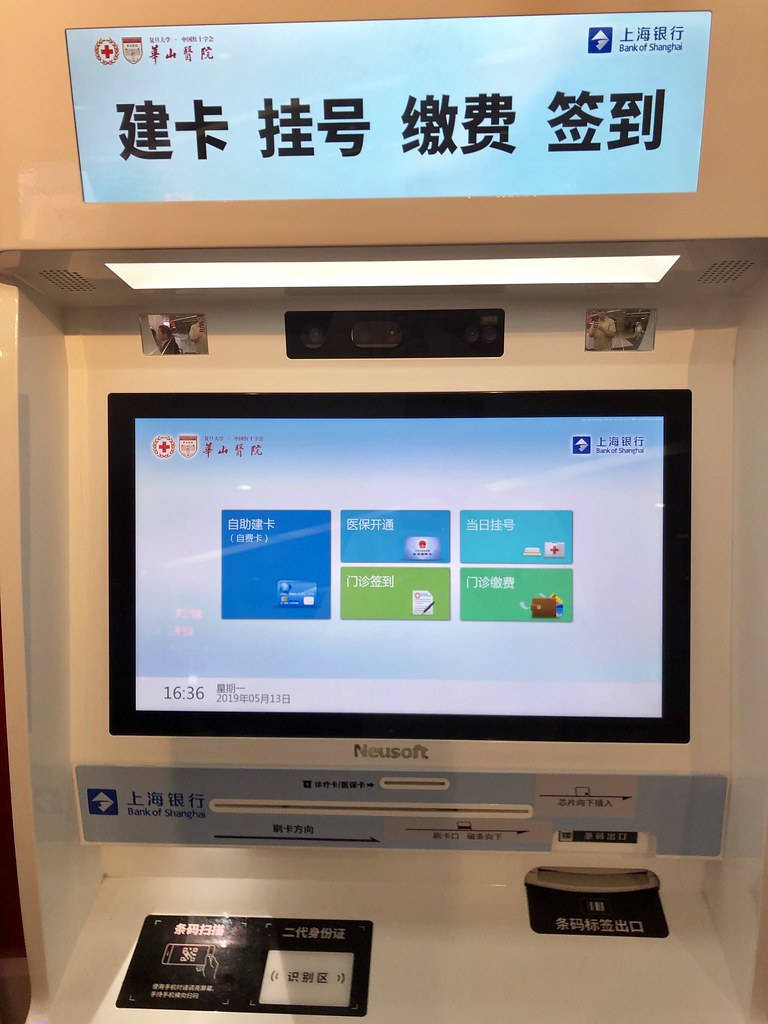Are Chinese Hospitals Going Smart?
The average person in China doesn’t go to a doctor’s office when they get hurt or sick; they go straight to a hospital. Then they have a pretty horrible (often all-day) ordeal ahead of them, involving paying to get a number, waiting to be seen, getting briefly looked at to determine next steps, then waiting in line to pay for tests or other services, then waiting on the results, then taking them back to the original doctor for a final diagnosis, etc. It really is a ton of time waiting in line to be seen by a person with (understandably) very little patience, only to be curtly passed off to the next term of waiting.
So when recently I visited Huashan Hospital in Shanghai (one of the better public ones), I was surprised to see these kiosks:


The big title on the wall is 智慧e疗. The 智慧 refers to “smart,” and the e疗 is a pun on 医疗, which means “medical treatment.” (Not even healthcare is above a good old “e” pun!)
The closer view displays the following words:
- 建卡 (jiàn kǎ) to create a card (and associated account)
- 挂号 (guàhào) to register (at a hospital)
- 缴费 (jiǎofèi) to pay fees
- 签到 (qiāndào) to sign in (for an appointment)
I didn’t use this kiosk, and it seems not many people did. Hopefully progress is just around the corner!
